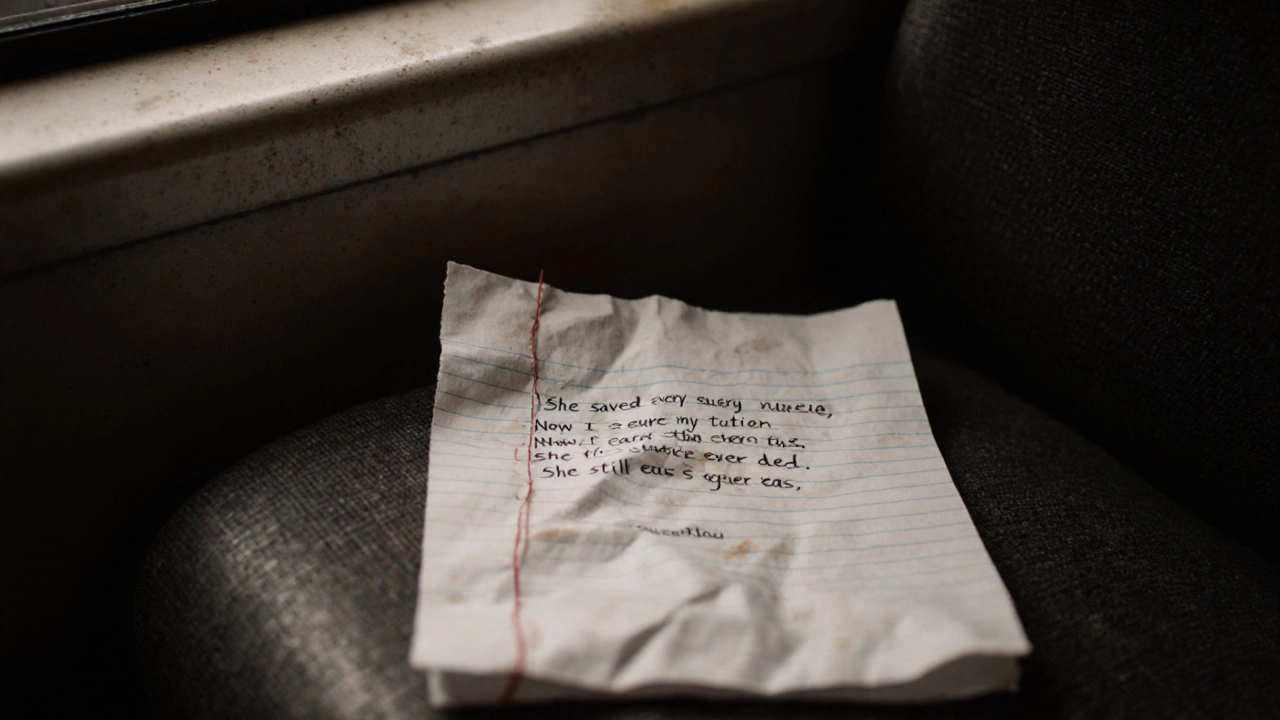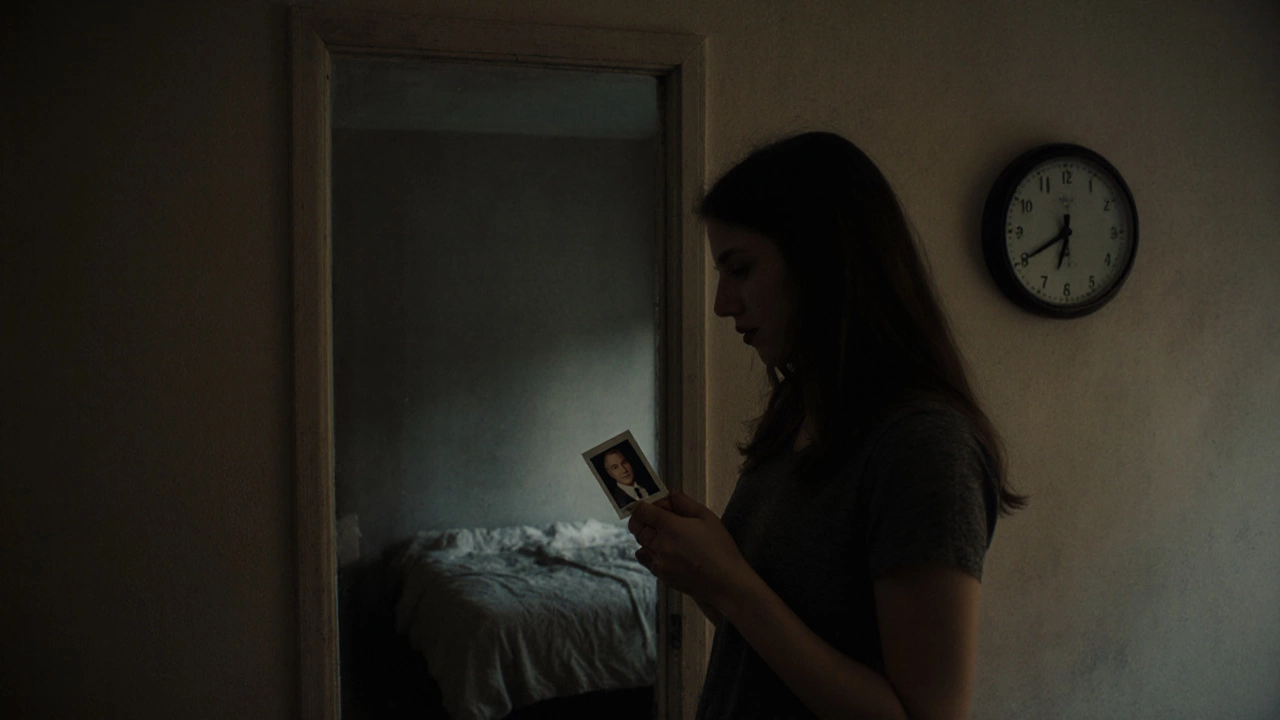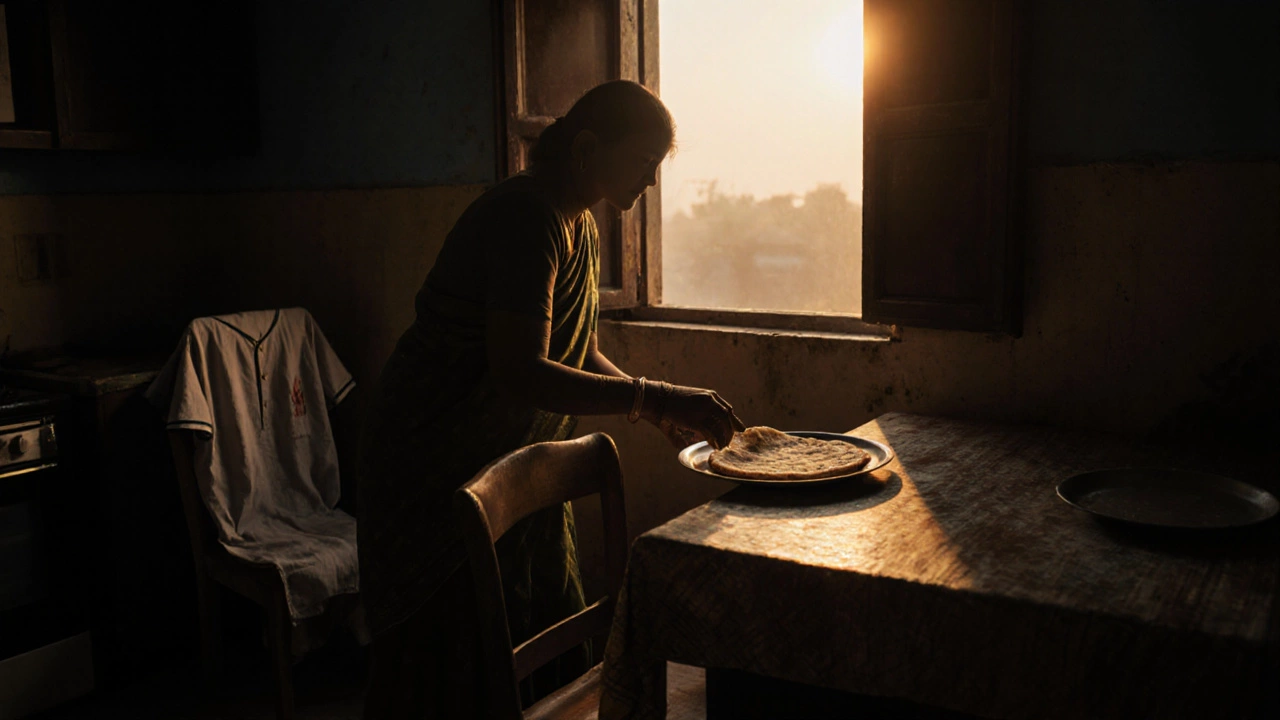Volta Identifier Tool
How to Use
Paste any short poem (1-8 lines) below. The tool will identify where the volta likely occurs and explain why it qualifies as a volta turn.
-
✓
Looks for emotional shift in last 1-2 lines
-
✓
Checks for reorientation of meaning
-
✓
Explains why it's a volta, not just a twist
Volta location: Line
Why it's a volta:
Poem with volta highlighted
A Volta poem isn’t a type of poem you find in a textbook with a fixed number of lines or rhymes. It’s a turn - a sudden shift in thought, emotion, or direction - that gives a short poem its punch. In Indian short poetry, especially in modern English-language verses written by poets from Delhi, Mumbai, or Kerala, the volta is what turns a quiet observation into a gut-punch realization.
Think of it like this: you’re reading a poem about a mother packing lunch for her son before school. She adds an extra chapati. You think it’s sweet. Then, in the last line, the poet writes: ‘He hasn’t eaten at home since the day she stopped coming back.’ That’s the volta. One moment, warmth. The next, loss. No warning. Just truth.
The word ‘volta’ comes from Italian, meaning ‘turn.’ It’s been used for centuries in sonnets - Shakespeare’s 14-line poems often had a volta after line 8 or before the final couplet. But in Indian short poetry, the volta doesn’t wait for 14 lines. It shows up in six. Or three. Sometimes, just two.
Why the volta matters in Indian short poetry
Indian poets writing in English today don’t have the luxury of space. They’re not writing epics. They’re writing for WhatsApp statuses, Instagram captions, or scribbled notes in train compartments. Every word must earn its place. That’s where the volta shines.
Take this poem by a young poet from Patna:
She saved every rupee
for my tuition.
Now I earn more than she ever did.
She still eats the leftovers.
Up until the last line, you think it’s about sacrifice. Then - she still eats the leftovers. That’s the volta. It doesn’t explain. It doesn’t moralize. It just shows you the truth you didn’t want to see.
This isn’t just clever writing. It’s cultural. In Indian families, silence often carries more weight than speech. The volta mirrors that. It lets the unsaid speak louder than the said.
How to spot a volta in a short poem
Not every twist is a volta. A volta isn’t just a surprise. It’s a reorientation. It changes how you understand everything that came before it.
Here’s how to find one:
- Read the poem once, just to feel it.
- Read it again, line by line. Ask: Where does the mood shift?
- Look for contrast: joy to grief, hope to resignation, love to abandonment.
- The volta often comes in the last 1-2 lines. Rarely earlier.
- If the last line makes you pause - that’s it.
Example from a poem published in Indian Literature Today:
I asked my father why he never hugged me.
He said, ‘I didn’t know how.’
He died last week.
I still don’t know how.
The first two lines feel like a child’s question. The third line drops the bomb. The fourth line isn’t a reply - it’s a mirror. The volta doesn’t answer the question. It makes you realize the question was never about the father. It was about the son’s silence.

Volta vs. punchline vs. twist
People often confuse the volta with a joke’s punchline or a plot twist. But they’re not the same.
- A punchline makes you laugh. A volta makes you ache.
- A twist surprises you with new facts. A volta changes how you see the old ones.
- A punchline ends the joke. A volta ends the illusion.
Compare these two endings:
She waited for him every evening.
He never came back.
Turns out he was in jail.
This is a twist. New information. But it doesn’t change how you feel about the waiting.
She waited for him every evening.
He never came back.
She still sets two plates.
This is a volta. The twist was factual. This is emotional. The meaning of ‘waiting’ has now transformed. The poem isn’t about absence anymore. It’s about devotion that outlives logic.
Volta poems in modern Indian poetry - who writes them?
Today’s Indian poets writing in English are young, urban, and deeply aware of global forms - but they write from the kitchen table, not the lecture hall.
Poets like Arundhathi Subramaniam, Jeet Thayil, and Shivani Gupta use the volta to explore grief, gender, and generational silence. You’ll find it in their collections - short, sharp, and devastating.
Even in social media poetry, the volta is alive. Instagram poets like Shruti Saxena and Manan Bhatt build entire followings on poems that are 3-5 lines long - each ending with a volta that feels like a whispered secret.
One viral poem from 2024:
Mom says I’m too soft.
She doesn’t know
I cried for three days
when the stray dog I fed died.
She thinks that’s weakness.
I think it’s the only thing left
that’s still mine.
The volta lands in the last three lines. The poem isn’t about the dog. It’s about a young woman reclaiming her humanity in a world that tells her to be tough.

How to write your own volta poem
You don’t need fancy words. You need honesty.
Here’s a simple method:
- Start with something ordinary: a tea cup, a bus ticket, a broken toy.
- Describe it plainly. No metaphors yet.
- Then, ask: What’s the hidden cost? What’s the silence behind this?
- Write the last line as if you’re revealing something you didn’t mean to say.
Example:
My brother left for Dubai last year.
He sends money every month.
He never calls.
My mother keeps his room clean.
She says, ‘He might come back for Diwali.’
That’s it. No rhyme. No rhythm. Just truth. The volta is in the last line - the hope that refuses to die.
Why the volta is the heartbeat of Indian short poetry
Indian life is full of unspoken things. The mother who doesn’t say she’s lonely. The son who doesn’t say he’s scared. The daughter who doesn’t say she’s tired.
The volta poem gives voice to those silences. It doesn’t shout. It doesn’t explain. It just turns the light on for a second - and you see what was always there.
That’s why these poems stick. Not because they’re beautiful. But because they’re true.
Next time you read a short poem - whether it’s on a wall in a Chennai metro station or in a WhatsApp forward - look for the turn. The moment everything changes. That’s not just poetry. That’s survival.
